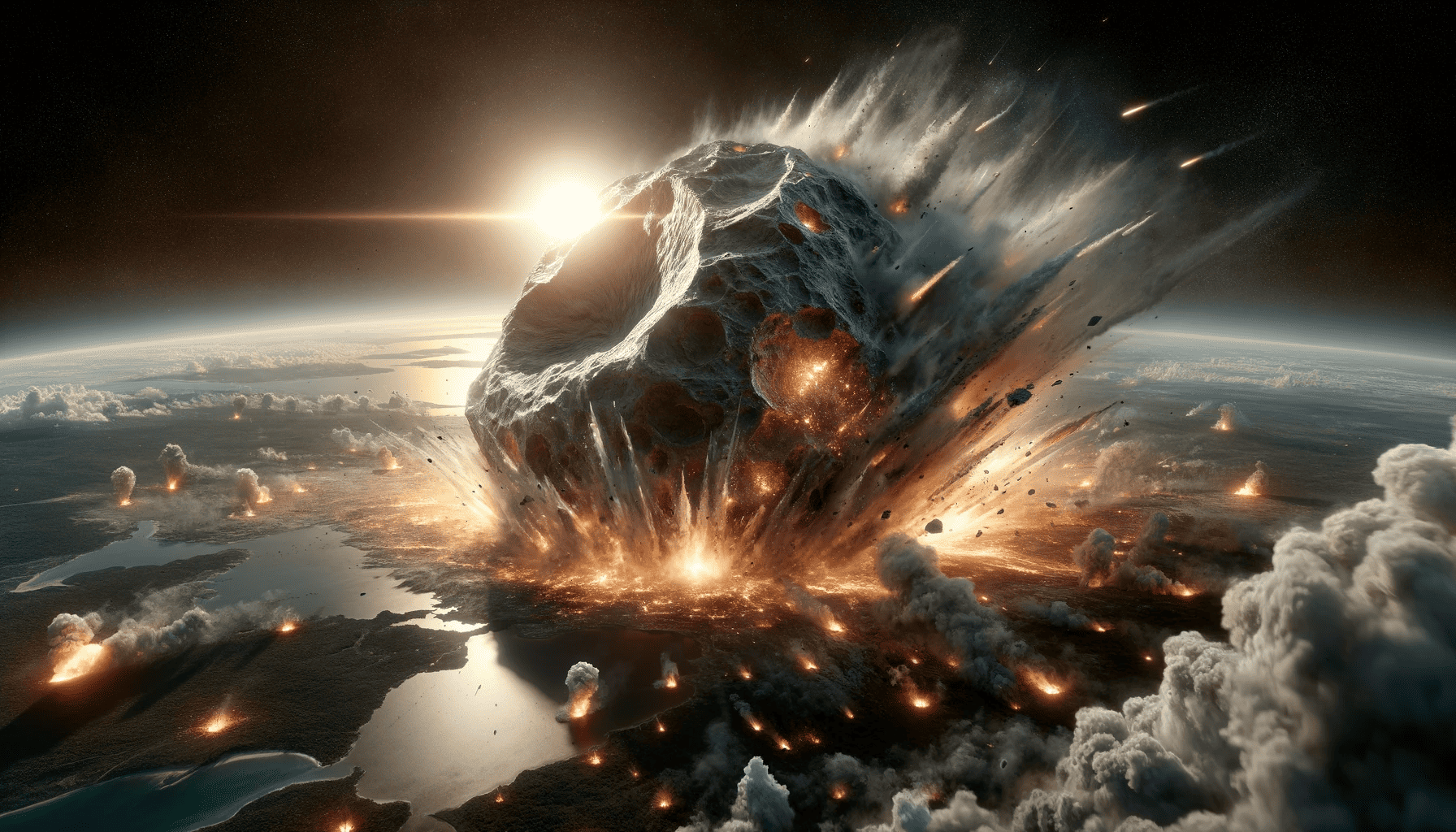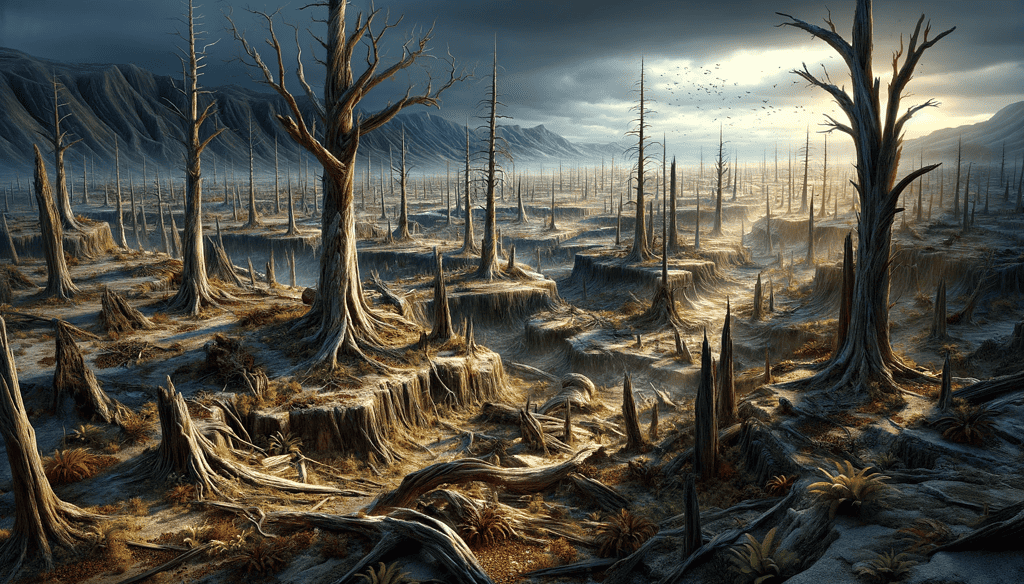
A cataclysmic event at the Cretaceous-Palaeogene (K-Pg) boundary, approximately 66 million years ago, marked a pivotal moment in Earth’s history. Triggered by the impact of a massive asteroid, this event marked the end of the “age of the dinosaurs.”
Global climate experienced a rapid and dramatic shift that ultimately resulted in the mass extinction of around 75% of Earth’s species, including the non-avian dinosaurs. But it’s not clear exactly how this extinction unfolded. For decades, scientists have grappled with the question of precisely what happened to the climate and creatures at the time. Now, recent research employing sophisticated paleoclimate simulations and sedimentological analysis offers new insights into this ancient mystery.
It wasn’t the impact: it was the winter that killed the dinosaurs.
The Chicxulub Winter
The Chicxulub crater, located under the Yucatán Peninsula in Mexico, is mostly hidden beneath the Earth’s surface. While its central point is found offshore, it gets its name from the nearby land-based village of Chicxulub Pueblo. This massive crater was formed from the impact of a huge asteroid, approximately ten kilometers wide.
The aftermath of the Chicxulub impact was nothing short of apocalyptic. The collision ejected an enormous amount of debris into the atmosphere, which included silicate dust, sulfur, and soot from wildfires. This resulting “blanket” covered the Earth and blocked sunlight for years. Essentially, it triggered a multi-year winter, akin to what you’d expect with a nuclear winter.

The resulting ‘impact winter’ was characterized by a significant drop in global temperatures, with new simulations indicating a decrease of up to 25 °C in some areas. This chilling effect persisted for about 20 years, with the most severe phase lasting for the first 5 to 8 years.
The new study focused on a well-preserved rock sample that formed at the time of the extinction. The researchers found numerous particles ranging from 0.8 to 8.0 µm — much more than they were expecting. This fine dust, previously underestimated, played a crucial role in extending the duration of the impact winter. The atmospheric injection of this dust resulted in a long-lived veil that hung over the Earth, significantly cooling the planet and disrupting photosynthesis for nearly two years post-impact.
In addition to silicate dust, sulfur and soot were also significant contributors to the post-impact cooling.
Sulfur, released from the vaporization of the asteroid and Earth’s crust, formed sulfate aerosols in the atmosphere, which further contributed to the cooling. Soot from global wildfires, triggered by the impact, also played a role, though its impact was relatively less severe compared to that of the silicate dust.
The impact halted photosynthesis

The impact-generated dust cloud had a dire consequence on photosynthesis, the life-supporting process fundamental to most ecosystems. The researchers modelled these effects with the new evidence and found that photosynthesising organisms would have been hampered severely.
The global-average Photosynthetically Active Radiation (PAR) flux, essential for photosynthesis, plummeted, marking a significant deficit in the energy available for primary producers. This decline in PAR led to a near shutdown of photosynthetic activity globally, severely impacting food chains and ecosystems.
This also cascaded down food chains. Communities of plants started collapsing, which led to a collapse in populations of vegetarian creatures, which ultimately affected the carnivores. Bit by bit, the entire structures of ecosystems gave way.
“Our simulations of the atmospheric injection of such a plume of micrometre-sized silicate dust suggest a long atmospheric lifetime of 15 yr, contributing to a global-average surface temperature falling by as much as 15°C. Simulated changes in photosynthetic active solar radiation support a dust-induced photosynthetic shut-down for almost 2 yr post-impact,” the researchers write in the study.
What killed the dinosaurs
Prolonged and intense global cooling, combined with the dramatic reduction in photosynthesis, created inhospitable conditions that many species simply could not withstand. If a species could enter a dormant phase or adapt to diverse food sources, it stood a better chance of surviving this new, dark and chilly world. Unfortunately, the dinosaurs largely didn’t have these helpful alternative options.
The study’s revelations about the Chicxulub impact have profound implications for our understanding of mass extinctions. The Chicxulub impact was one of the most devastating events in our planet’s history. It also presents a stark reminder of Earth’s vulnerability to cosmic events and their potential to trigger rapid and devastating environmental changes.
In this sense, this research not only elucidates the mechanisms behind one of the most dramatic episodes in Earth’s history but also serves as a cautionary tale about the fragility of life on our planet.
Still, the research also helps us to understand how life rebounded in the aftermath of such a catastrophic event. The mass extinction created a void in the global ecosystem, allowing for the rise of new species and the diversification of life forms. This period, known as the Cenozoic Era, saw the emergence and evolution of mammals, birds, and flowering plants, which came to dominate the landscape.
The study was published in Nature.






